Space
Why was Pluto removed from the list of planets in the solar system?
Published
2 months agoon
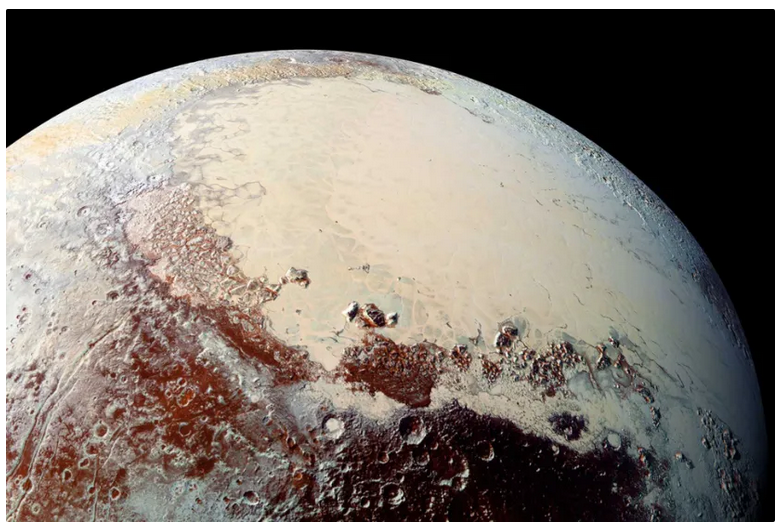

Why was Pluto removed from the list of planets in the solar system?
Our understanding of the solar system changed forever on August 24, 2006. At that time, the International Astronomical Union (IAU) researchers agreed to reclassify Pluto, changing the status of this object from a planet to a dwarf planet. This decision provoked a lot of anger and caused the textbooks to be rewritten. The demotion of the former ninth planet of the solar system is still controversial after more than 17 years.
Currently, the discussion about Pluto shows the problems in defining the concept of “planet”. The International Astronomical Union defines a planet as a celestial body that orbits the Sun with a nearly spherical appearance and, in most cases, clears the vicinity of its orbit of debris from other bodies. However, this set of criteria has not been universally agreed upon.
Earth and even Jupiter, despite their large size, have not cleared many asteroids from their orbital regions. In addition, there are small worlds such as Ceres that are spherical and revolve around the Sun, and are not considered planets.
-
After all, what is a planet?
-
A planetary puzzle
-
NASA’s New Horizons mission and the debate over the planet again
-
Can Pluto become a planet again?
-
What is the significance of Pluto being a planet?
Pluto’s demotion raises larger issues about how to define everybody in the solar system or even space more generally. This incident shows that science sometimes cannot divide objects into easy categories; Because if the definition of planet is expanded again, it is not clear how we should evaluate the numerous non-spherical bodies that orbit the Sun. Decisions about this may even call into question the asteroid belt (the huge band of small objects between Mars and Jupiter). Or what happens if a planet somehow breaks into pieces?
The discussion about Pluto shows the problems in defining the concept of “planet”.
Meanwhile, while the Pluto debate began almost 20 years ago, many still don’t fully understand all the controversy and why Pluto lost its planetary status. But the change in the number of planets in the solar system from nine to eight (at least according to the standard IAU definition) was long in the making and highlighted one of science’s greatest strengths: the ability to change seemingly fixed definitions in light of new evidence.
After all, what is a planet?
The word planet in English (Planet) goes back to ancient times and is derived from the Greek word Planetes meaning “wandering star”. The five classical planets—Mercury, Venus, Mars, Jupiter, and Saturn—are visible to the naked eye and move in strange paths across the sky compared to the much more distant background stars.
After the advent of telescopes, astronomers discovered two new planets, Uranus and Neptune. These two distant worlds are very dim and cannot be seen with the naked eye. It should be kept in mind that the discussed definition of a planet follows the Greco-Roman tradition and the definitions of the International Astronomical Union are based on it. In ancient times, the planets were observed with the naked eye all over the world and had different names in each culture.
When astronomers discovered Ceres in the asteroid belt in 1801, it was classified as a “planet” by the scientific community at the time. But the situation began to change; Because further measurements showed that Ceres is smaller than any other planet seen so far. This mass then entered a group of rocky bodies called “asteroids”, of which we now know hundreds of thousands of examples in the asteroid belt alone. Today, Ceres is known as a dwarf planet.
 Size comparison of Pluto and its moon Charon (bottom right) with the Moon and Earth.
Size comparison of Pluto and its moon Charon (bottom right) with the Moon and Earth.
Pluto was discovered and classified as a planet in 1930 (11 years after the founding of the International Astronomical Union). At the time, Clyde Tamba of the Lowell Observatory in Arizona compared photographic plates of the sky on separate nights and noticed a small spot moving back and forth across the starscape. However, the latest candidate for the ninth planet of the solar system was immediately considered a strange object. Pluto’s orbit is so elliptical, or eccentric, that it brings the object closer to the Sun than Neptune in 20 years of its 248-year journey. Pluto’s orbit is also tilted relative to the ecliptic, or the plane on which the other planets in the solar system rotate.
If Pluto is a planet, then is Eris also a planet?
In 1992, scientists discovered the first Kuiper Belt object named 1992 QB1. This small body orbits the Sun in the vicinity of Pluto and beyond the orbit of Neptune. Soon many similar objects were discovered, and a belt of small, icy worlds similar to the asteroid belt between Mars and Jupiter was revealed. Pluto remained the king of this region until, in July 2005, astronomers discovered the distant object Eris, which was initially thought to be even larger than Pluto.
A planetary puzzle
After the discovery of Eris, researchers had to ask themselves these questions: If Pluto is a planet, then is Eris also considered a planet? What about all those other icy bodies in the Kuiper Belt or smaller bodies in the Asteroid Belt? Where exactly is the dividing line for classifying an object as a planet? A word that once seemed straightforward and simple suddenly became strangely complicated.
Then intense debates ensued and new proposals were made to define the planet. Brian Marsden, a member of the IAU executive committee responsible for finding a new meaning for the planet, told Space.com in 2005: “Every time we think some of us are reaching a consensus, then someone says something and shows that it’s clear.” It’s not like that.”
A year later, astronomers were still nowhere near a solution, and the dilemma hung over the IAU General Assembly in Prague in 2006 like a dark cloud. At this conference, the researchers had eight days of intensive discussion and presented four different proposals. A controversial proposal would have brought the total number of planets in the solar system to 12 by adding Ceres, the largest asteroid, and Pluto’s moon, Charon.
Michael Brown, an astronomer at Caltech University and discoverer of Eris, called the proposal “complete confusion.”
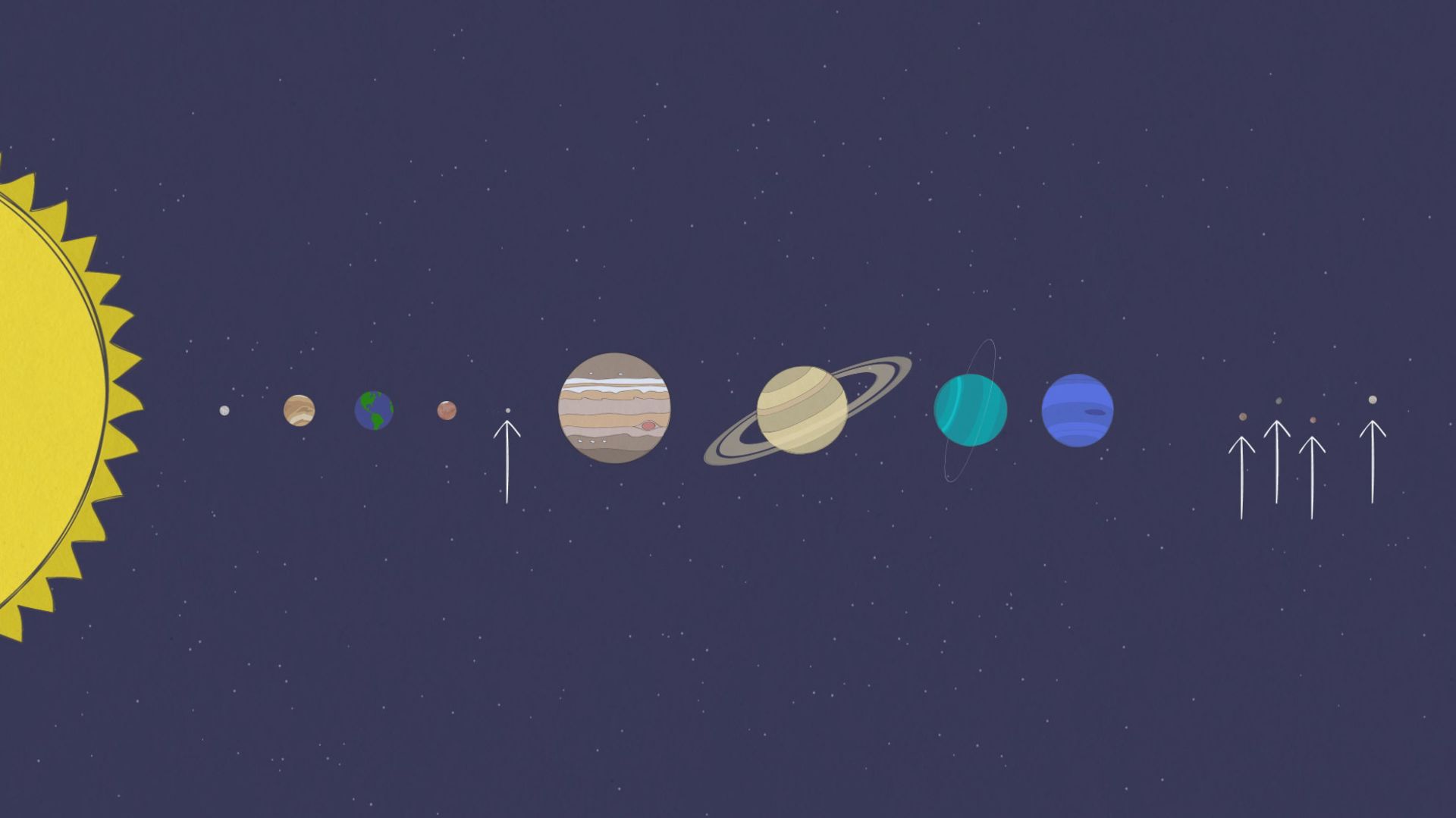 The globular objects in the Kuiper Belt (right arrows) and Ceres (left arrow) are now called dwarf planets.
The globular objects in the Kuiper Belt (right arrows) and Ceres (left arrow) are now called dwarf planets.
Near the end of the conference, the remaining 424 astronomers voted to create three new classifications for objects in the solar system. From then on, only Mercury and Neptune and the large worlds in between were considered planets. Then Pluto and its counterparts (globular bodies that shared the proximity of their orbits with other bodies) were called dwarf planets. All other objects that orbit the Sun are known as minor solar system bodies.
NASA’s New Horizons mission and the debate over the planet again
A group of experts did not take the decision of their colleagues seriously. Alan Stern, the senior researcher of NASA’s New Horizons spacecraft, which passed by Pluto in 2015, regretted the demotion of the former ninth planet of the solar system and said that less than five percent of the world’s 10,000 astronomers participated in the International Astronomical Union vote.
Read More: Ceres, the closest dwarf planet to Earth
New Horizons was considered an important turning point in the planetary debate. The spacecraft’s quick flyby of Pluto revealed a world far more dynamic than anyone imagined. Large mountains, impact craters, and signs of liquid nitrogen flowing on the surface all suggest a world that has undergone significant geological changes since its formation. People like Stern have argued that Pluto should be considered a planet on that basis alone.
New Horizons was considered an important turning point in the planetary debate
Images taken from Pluto’s moon Charon also show a very dynamic place; Including the red cap on its pole, which apparently changes its appearance with the slow seasonal change in the solar system. Most importantly, Pluto has several moons; While Mercury and Venus, the two inner planets of the solar system, do not have even one moon. Many asteroids and dwarf planets also have moons, complicating the definition of a planet.
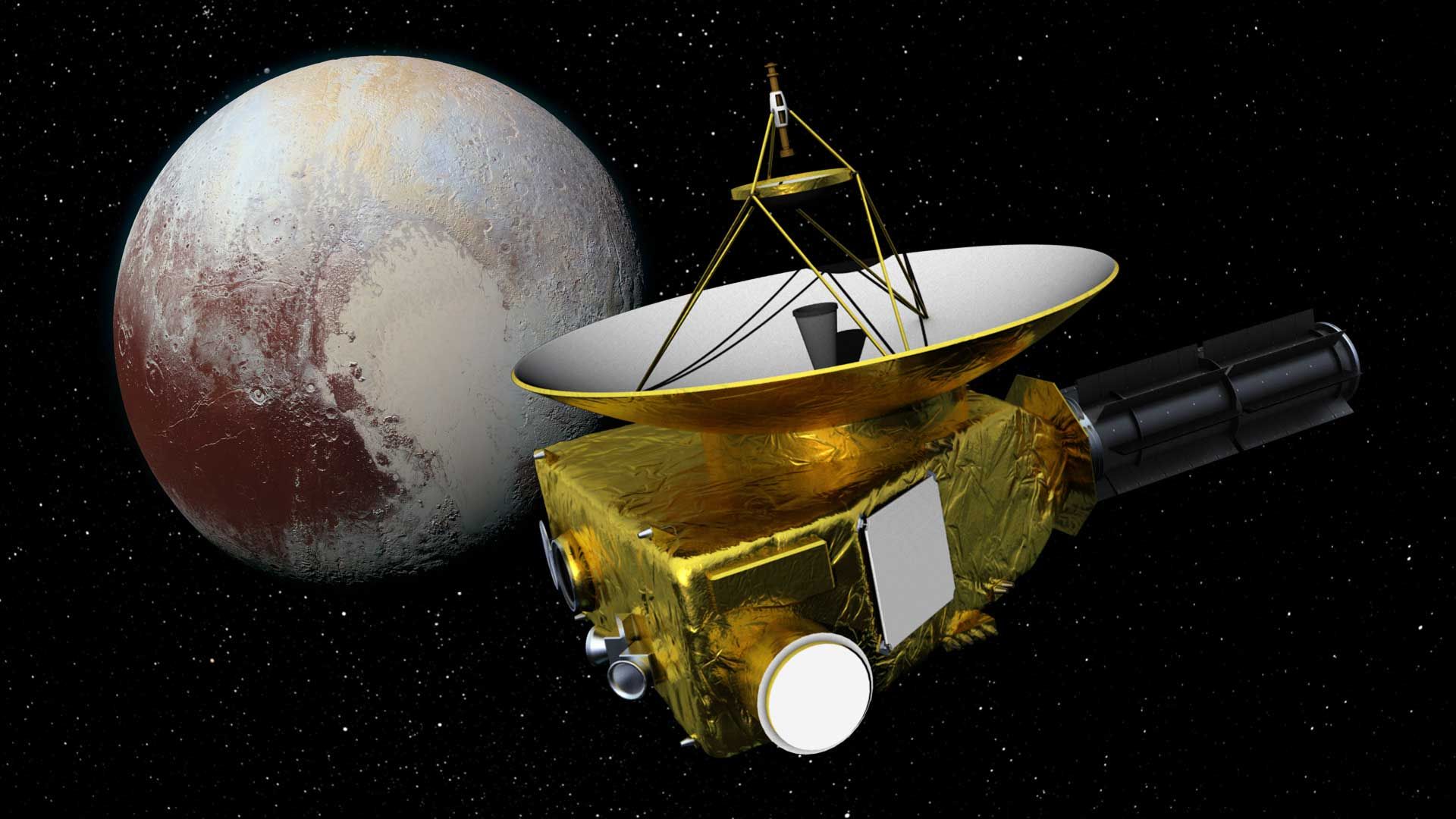 New Horizons is the only spacecraft that has ever had a close encounter with Pluto.
New Horizons is the only spacecraft that has ever had a close encounter with Pluto.
Many people share views with Stern and other like-minded experts. In 2014, shortly before New Horizons flew past Pluto, experts at the Harvard-Smithsonian Center for Astrophysics (CfA) in Cambridge, Massachusetts, debated different definitions of the planet. Owen Gingerich, a science historian who chairs the IAU’s Planet Definition Committee, stated that “planet is a culturally defined term that changes over time.” But most of the audience watching the CfA debate opted for a different definition that would have put Pluto back among the planets.
Alternative classification schemes continue to be proposed. A 2017 proposal defined a planet as “a spherical body in space that is smaller than a star.” This definition makes Pluto a planet again; But it does the same with Earth’s moon, as well as many other moons in the solar system, bringing the total number of officially recognized planets to 110. A year later, Stern wrote an op-ed in The Washington Post with David Greenspoon, a senior scientist at the Planetary Science Association, arguing that the International Astronomical Union’s definition was hastily adopted and problematic and that astronomers should rethink their ideas.
Can Pluto become a planet again?
Numerous requests from experts have so far been ignored, and the International Astronomical Union is unlikely to address the dispute anytime soon. “The simple fact is that Pluto was misclassified at the time of discovery,” wrote American astrophysicist Ethan Siegel in response to Stern and Greenspoon. “This crime has never been in the same position as the other eight worlds.”
Michael Brown also says: “As a result, Pluto is still not a planet, and in fact it never was.” We just got it wrong for 50 years and now we know better. Missing Pluto is not really a very good argument. “The reality is something else and we have to deal with it.”
What is the significance of Pluto being a planet?

These days, children who weren’t even born when Pluto was a planet, ask what the definition of a planet even matters. Why do we have to discuss whether Pluto is a planet or not? Astronomers say there’s no simple answer, and we may have to look beyond our own solar system to understand what makes an object a planet or not.
More than five thousand exoplanets or worlds beyond the solar system have been discovered so far. This vast collection ranges from Earth-sized “super-Earths” to Uranus and “hot Jupiters” orbiting their star closely, to a range of worlds of other sizes. The types of planetary environments that must be considered are changing rapidly.
It seems unlikely that the International Astronomical Union will address the Pluto controversy anytime soon
What the increasing knowledge of the types of exoplanets shows us is that each star system may have its own unique environment. Although it can be said more generally that stars can form planets from the collapse of gas and dust in their environment, the unique dynamics that control the process of planet formation are much more complex. For example, are multiple stars involved in this process? How much dust is there? Is there a black hole or supernova that will destroy the precious dust and gas needed to grow planets?
Even if planets are lucky enough to grow large, how they interact with other planets early in their formation is poorly understood. The worlds interact with each other, and the mutual gravitational effect between them causes the planets to move away from their parent star, close to it, or in some cases, fall out of the system altogether.
What all these explanations suggest is that our definition of a planet should probably be more contextual to account for the number of possible scenarios for the formation of universes. Perhaps the planets depend on a specific formation condition or specific regions. All we seem to know for sure is that as more and more data is collected, the planet’s definition and the debate that Pluto has sparked will continue for some time to come.


You may like
-

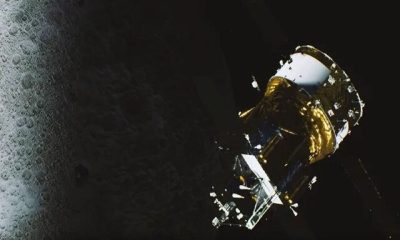


A mystery that is solved by the China’s Chang’e-6 probe!
-




Discover a new answer to the ancient mystery of a Venus!
-

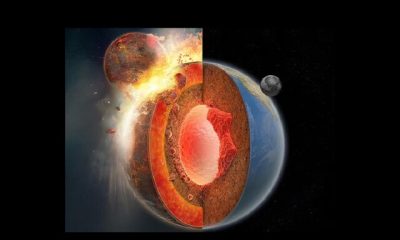


Discovering new evidence of the impact that formed the Earth’s moon
-

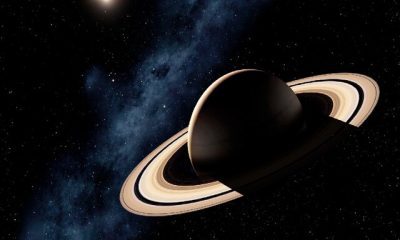


Maybe alien life is hidden in the rings of Saturn or Jupiter
-

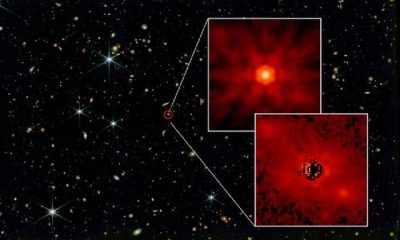


Discovering new clues about the formation of the world’s first black holes
-




NASA is going to space exploration with a 36-pixel camera
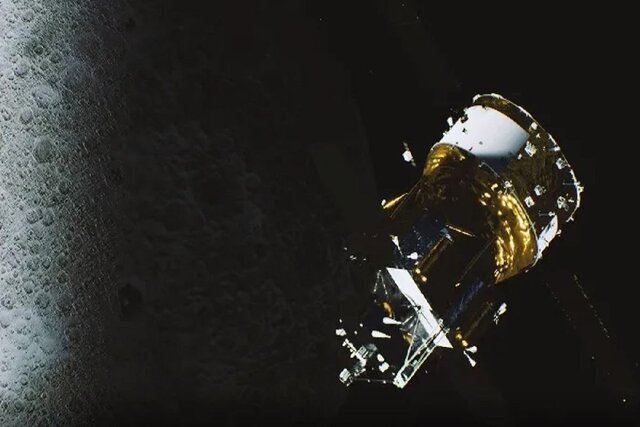

China’s Chang’e-6 probe, launched to retrieve samples from the far side of the moon, has a big mystery to solve about Earth’s moon.
A mystery that is solved by the China’s Chang’e-6 probe!
China’s Chang’e-6 mission, which is currently on its way to bring back samples from the far side of the moon, will help investigate theories about why the far and near sides of the moon differ.
According to Space, Changi 6 is expected to land in early June in the Apollo impact basin, which is located within the larger South Pole–Aitken basin.
The Aitken Antarctic Basin is the largest collisional feature of its kind in the solar system, with an area of 2,400 x 2,050 km. This basin was formed about 4.3 billion years ago, which is very early in the history of the solar system.
Although the Apollo Basin is younger, it is the largest impact site within the Aitken Antarctic Basin. Apollo has a two-ring structure, the inner ring consists of mountain peaks with a diameter of 247 km, and the outer ring is about 492 km wide.
The Chang’e-6 mission was launched on May 3 from the Wenchang Satellite Launch Center in Hainan Province, located in southern China, and went to the moon on a Long March 5 rocket.
As the first mission to bring samples from the far side of the moon, Changi 6 is supposed to bring back about two kilograms of precious lunar material. The far side of the moon is a relatively unknown place. The fact that we can’t see the far side of the moon from Earth adds to its mystery. For the first time, the Soviet Union’s “Luna 3” spacecraft photographed the far side of the moon in 1959.
With that photo, scientists around the world were amazed to see how different the far side of the moon is from the side we are familiar with. Although both the far and near sides have many craters, the near side also contains vast volcanic plains called “lunar maria” that cover about 31% of it.
The far side of the moon is opposite and volcanic plains cover only about 1% of it.
So how did the far side and the near side become so different? It seems that the thickness of the shell is one of the factors. In fact, NASA’s GRAIL mission found in 2011 that the far-side crust is on average 20 kilometers thicker than the near-side crust.
The reason for this is thought to be that our moon was formed from debris from the impact of a Mars-sized planet on Earth about 4.5 billion years ago. As the Moon formed from that debris, it became tidally locked. This means that it always shows the face of our planet.
The surface of the earth was completely melted by that big impact and it radiated heat towards the near side of the moon and kept itself molten for a longer time. Scientists believe that the rock vaporizes on the near side and condenses on the colder side, thickening the crust on the far side.
Hong Kong University (HKU) researcher Yuqi Qian is one of the lead researchers on a new project that shows that a sample to be returned to Earth by Chang’e 6 could test this theory. Keyan said: Basic findings show that the difference in crustal thickness between the near and far sides may be the main cause of the difference in the moon’s volcanism.
In places like most distant parts where the Moon’s crust is thick, magma can’t seep through fractures to the surface. In areas such as the near side where the crust is thin, fractures can allow magma to seep in and lead to lava eruptions.
The Aitken and Apollo Antarctic Basins, despite both being on the far side of the Moon, create contradictions. That’s because they’ve gouged deeply into the Moon’s crust, and at the base of these giant impact sites, the crust is thinner than elsewhere on the far side. Volcanic plains also exist within these basins, but only five percent of their area is covered by basalt lava. This limited amount of volcanism seems to contradict the conventional idea that crustal thickness dictates volcanic activity. This creates a paradox in lunar science that has been known for a long time.
An alternative possibility suggests that the near side could contain more radioactive elements than the far side. These elements may have generated heat and led to the melting of the lower mantle. As a result, much more magma has formed and a thinner crust has formed on the near side. Hence, the volcano is more in this area.
However, by landing on one of the few volcanic plains on the far side, Chang’e 6 could provide samples to directly test such theories. In particular, the Apollo Basin area where Chang’e 6 will land contains a variety of materials that require investigation.
Some evidence shows that there were two major volcanic eruptions in this area. Scientists believe that one of them covered the entire region in magma containing a small amount of titanium around 3.35 billion years ago. The other, which probably occurred 3.07 billion years ago, probably contained titanium-rich magma and erupted near the Chaffee S crater. Thus, the thickness is reduced.
Read more: Discovering new evidence of the impact that formed the Earth’s moon
New research shows that bringing samples from near the Chafi S crater will bring the most scientific benefits. This area has titanium-rich basalt in the upper part, titanium-free basalt in the lower part, and various pieces of projectile material from the impact.
“Joseph Michalski” (Joseph Michalski), a researcher at the University of Hong Kong and one of the researchers of this project said: “Diverse sample sources provide important information to answer a set of scientific questions about the Moon and the Apollo Basin.”
These diverse samples can also provide scientists with information about magmatic processes occurring on the far side of the moon. By comparing them with nearby samples brought back to Earth by the Apollo missions, scientists may be able to answer the question of why the number of volcanoes on the far side of the Moon is so limited.
This research was published in the journal “Earth and Planetary Science Letters”.
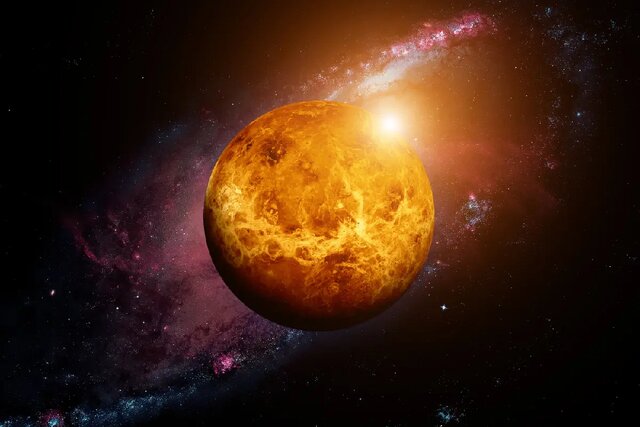

New research from the University of Colorado Boulder shows that Venus is losing water faster than previously thought, which could provide information about the planet’s early habitability.
Discover a new answer to the ancient mystery of Venus!
Today, the atmosphere of Venus is as hot as an oven and drier than the driest desert on Earth, but our neighboring planet was not always like this.
According to Converse, billions of years ago, Venus had as much water as Earth today. If that water was once liquid, then Venus was probably once habitable.
Over time, almost all of Venus’s water reserves have been lost. Understanding how, when, and why Venus lost its water reserves will help planetary scientists understand what makes a planet habitable, or what can turn a habitable planet into an uninhabitable one.
Scientists have theories to explain why most of the water supplies have disappeared, but the amount of water that has disappeared is actually greater than predicted.
Research conducted at the University of Colorado Boulder (CU Boulder) reports the discovery of a new water removal process that has been overlooked in recent decades but could explain the mystery of water loss.
Energy balance and premature water loss
The solar system has a habitable zone. This region is a narrow ring around the Sun where planets can have liquid water on their surface. Earth is in the middle of the habitable zone, Mars is outside on the very cold side, and Venus is outside on the very hot side. The place of a planet in this habitable spectrum depends on the amount of energy received by the planet from the sun and also the amount of energy emitted by the planet.
The theory of how Venus loses water reserves is related to this energy balance. Sunlight on early Venus decomposed the water in its atmosphere into hydrogen and oxygen. Hydrogen warms a planet’s atmosphere, acting like having too many blankets on the bed in the summer.
When the planet gets too hot, it throws the blanket away. Hydrogen escapes into space in a process called “hydrodynamic escape”. This process removed one of the key elements, water, from Venus. It is not known exactly when this process occurred, but it was probably around the first billion years of Venus’ life.
Hydrodynamic volatilization stopped after most of the hydrogen was removed, but some hydrogen remained. This process is like pouring out the water in the bottle, after which there are still a few drops left in the bottle. The remaining droplets cannot escape in the same way, but there must be another process on Venus that continues to remove the hydrogen.
Small reactions and big differences
This new research suggests that a neglected chemical reaction in Venus’s atmosphere could produce enough volatile hydrogen to close the gap between the missing water supply and the observed water supply.
The way this chemical reaction works is in the research of the University of Colorado Boulder. In the atmosphere, HCO ⁺ gas molecules, which are composed of hydrogen, carbon, and oxygen atoms and have a positive charge, combine with negatively charged electrons.
When ⁺ HCO and electrons react, ⁺ HCO breaks down into a neutral carbon monoxide molecule, CO, and a hydrogen atom. This process gives the hydrogen atom the energy it needs to exceed the planet’s speed and escape into space. The whole reaction is called HCO ⁺ dissociative recombination, but the researchers abbreviated it as DR.
Water is the main source of hydrogen on Venus. Thus, the DR reaction dries out the planet. The DR reaction probably happened throughout the history of Venus, and this research shows that it probably continues to this day. This reaction doubles the rate of hydrogen escape previously calculated by planetary scientists, changing their understanding of current hydrogen escape on Venus.
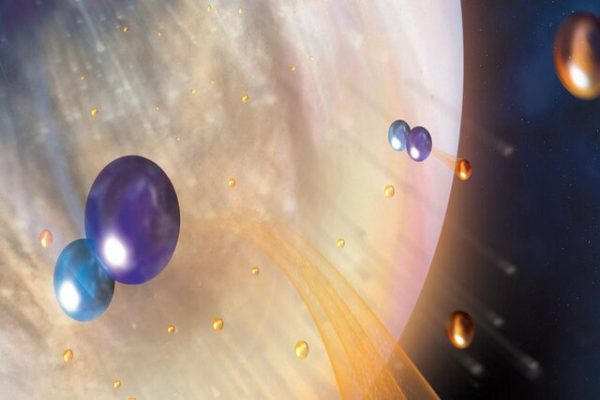

Understanding the conditions of the planet Venus with data and computer models
Researchers in this project used computer modeling and data analysis to study DR in Venus.
Modeling actually began as Project Mars. Mars also had water before – though less than Venus – and lost most of it.
To understand the escape of hydrogen from Mars, the researchers created a computational model of the Martian atmosphere that simulated the chemistry of the Martian atmosphere. Despite being very different planets, Mars and Venus have similar atmospheres. Therefore, the researchers were able to use this model for Venus as well.
They found that the DR reaction produced large amounts of fugitive hydrogen in the atmospheres of both planets. This result is consistent with observations made by the Mars Atmospheric and Volatile Evolution Mission (MAVEN) orbiting Mars.
Collecting data in the Venus atmosphere would be valuable to support the computer model, but previous missions to Venus have not measured ⁺ HCO; Not because it doesn’t exist, but because they weren’t designed to detect it. However, they investigated the reactants that produce HCO ⁺ in Venus’s atmosphere.
By analyzing observations made by the Pioneer probe and using their knowledge of the planet’s chemistry, the researchers showed that ⁺ HCO is likely present in the atmosphere in similar amounts to the computer model.
Searching for water
This research has solved part of the puzzle of how planetary water reserves are lost, which affects how habitable a planet is. We have learned that water loss occurs not only in one moment but over time and through a combination of methods.
Read more: Maybe alien life is hidden in the rings of Saturn or Jupiter
The faster loss of hydrogen through the DR reaction means that it takes less time overall to remove the remaining water on Venus. Also, this means that if oceans existed on early Venus, they could have existed for much longer than scientists thought. This allows more time for potential life to develop. The research results do not mean that oceans or life definitely existed. Answering this question requires more science.
The need for new missions and observations of Venus is felt. Future missions to Venus will provide some atmospheric surveys but will not focus on its atmosphere. A future mission to Venus, similar to the Moon’s mission to Mars, could greatly expand our knowledge of how the atmospheres of terrestrial planets form and evolve over time.
With technological advances in recent decades and renewed interest in Venus blossoming, now is a great time to turn our gaze to Earth’s sister planet.
Space
Discovering new evidence of the impact that formed the Earth’s moon
Published
2 days agoon
09/05/2024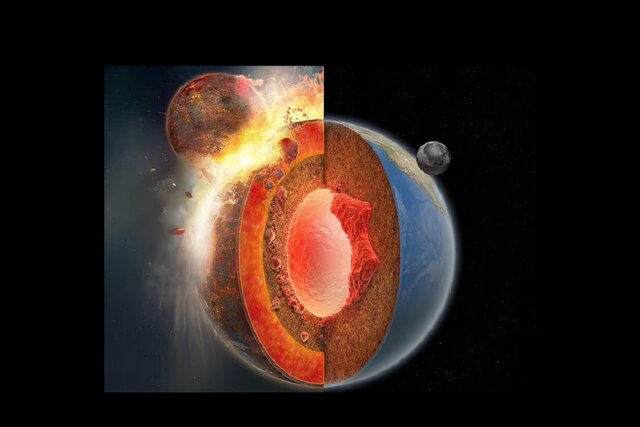

Discovering new evidence of the impact that formed the Earth’s moon. Data from NASA’s GRAIL spacecraft have found large deposits of iron-titanium ore deep on the moon’s surface, suggesting the remnants of Earth’s moon Thea.
Discovering new evidence of the impact that formed the Earth’s moon
A study on a metallic mineral from deep within the moon has provided new evidence that the natural moon of Earth was formed long ago by the impact of an ancient planet.
According to the Daily Mail, this long-theorized interplanetary collision, which scientists believe occurred about 4.5 billion years ago, describes a Mars-sized planet called Theia that, after colliding with Earth, It turned into pieces of hot lava.
Although some of the remnants of Theia appear to have been buried in large, dense blobs deep in the African and Pacific tectonic plates, evidence remains unclear as to where the rest of Theia went after the crash, scientists said.
Now, new data from NASA’s GRAIL spacecraft have found large deposits of iron-titanium ore deep within the moon’s surface, suggesting that other remnants of Theia actually formed Earth’s moon.
Adrien Broquet, a planetary geophysicist at the German Aerospace Center (DLR), described the GRAIL findings as fascinating.
A new paper by Brockett’s group focuses on gravitational anomalies deep within the Moon’s surface. These anomalies are dense, heavy pockets of matter detected by the GRAIL spacecraft’s sensors. “Analyzing these changes in the moon’s gravitational field allowed us to probe beneath the moon’s surface and see what lies beneath,” Brockett said.
The GRAIL spacecraft detected two dense regions beneath the Moon’s crust in the region between the crust and the core, called the mantle, which correspond to deposits of titanium-iron ilmenite. If the Tia collision theory is correct, we can say that these reserves exist.
After Thea likely collided with Earth, and after pieces of the missing planet were buried deep in the Earth’s crust, pools of molten lava rich in titanium and heavy iron on the moon’s surface sank toward its core, pushing lighter rocks upward. Jeff Andrews-Hanna, a geophysicist at the Lunar and Planetary Laboratory at the University of Arizona (UArizona), said: Our moon literally turned upside down.


Computer models presented by Peking University (PKU) researcher Nan Zhang provided the main framework for the theory that titanium-rich material exists deep within the moon, and as a result, it can be said that the origin of the moon is fragments of The planet Tia.
“When we saw the model’s predictions, it was as if everything became clear to us,” Andrews-Hannah said. When we look at the subtle changes in the Moon’s gravitational field, we see the exact same pattern, which hides a network of dense material beneath the crust.
Earth-based research has identified two dense, unusual regions in our planet’s mantle, called LLVPs, which have given credence to the theory that an interplanetary collision created our moon Theia. One of the two LLVPs lies beneath the African tectonic plate and the other beneath the Pacific tectonic plate, which is monitored by seismic equipment similar to that used to detect earthquakes.
Their existence was discovered when geologists found that seismic waves are dramatically reduced at a depth of 2,900 kilometers in the two regions and are different from the rest of the Earth. Scientists believe that the material in these two LLVPs is between 2 and 3.5 percent denser than the mantle around Earth.
Last year, a group of researchers led by the California Institute of Technology (Caltech) came up with the idea that two LLVPs could have evolved from a small amount of Thia material that entered the lower mantle of the ancient Earth.
Read more: Why there is no gaseous moon in solar system?
To confirm this, they enlisted the help of Shanghai Astronomical Observatory (SHAO) researcher Professor Hongping Deng to investigate this idea using his pioneering methods in fluid dynamics.
After running a series of simulations, Deng found that following the impact, a significant amount of their material—about two percent of Earth’s mass—was injected into the lower mantle of the ancient planet Earth.
“Qian Yuan”, a geophysicist at the California Institute of Technology and one of the researchers of this project, said: “With a detailed analysis of a wider range of rock samples, along with collision models and models of the Earth’s evolution, we can infer the material composition and orbital dynamics of the early Earth.”
Their research was published in Nature magazine last year.


A mystery that is solved by the China’s Chang’e-6 probe!


Artificial intelligence identifies cancer killer cells


Discovery of new hydrothermal wells at a depth of 2.5 km in the ocean


Discover a new answer to the ancient mystery of a Venus!


Discovering new evidence of the impact that formed the Earth’s moon


The secret of the cleanest air on earth has been discovered


Xiaomi Pad 6S Pro review


Testing a vaccine that reduces liver tumors


Why the James Webb telescope does not observe the beginning of the universe?


Why do people listen to sad songs?
Popular
-



 Technology9 months ago
Technology9 months agoWho has checked our Whatsapp profile viewed my Whatsapp August 2023
-



 Technology10 months ago
Technology10 months agoHow to use ChatGPT on Android and iOS
-



 Technology9 months ago
Technology9 months agoSecond WhatsApp , how to install and download dual WhatsApp August 2023
-



 Technology11 months ago
Technology11 months agoThe best Android tablets 2023, buying guide
-



 AI1 year ago
AI1 year agoUber replaces human drivers with robots
-



 Humans1 year ago
Humans1 year agoCell Rover analyzes the inside of cells without destroying them
-



 Technology10 months ago
Technology10 months agoThe best photography cameras 2023, buying guide and price
-



 Technology11 months ago
Technology11 months agoHow to prevent automatic download of applications on Samsung phones
